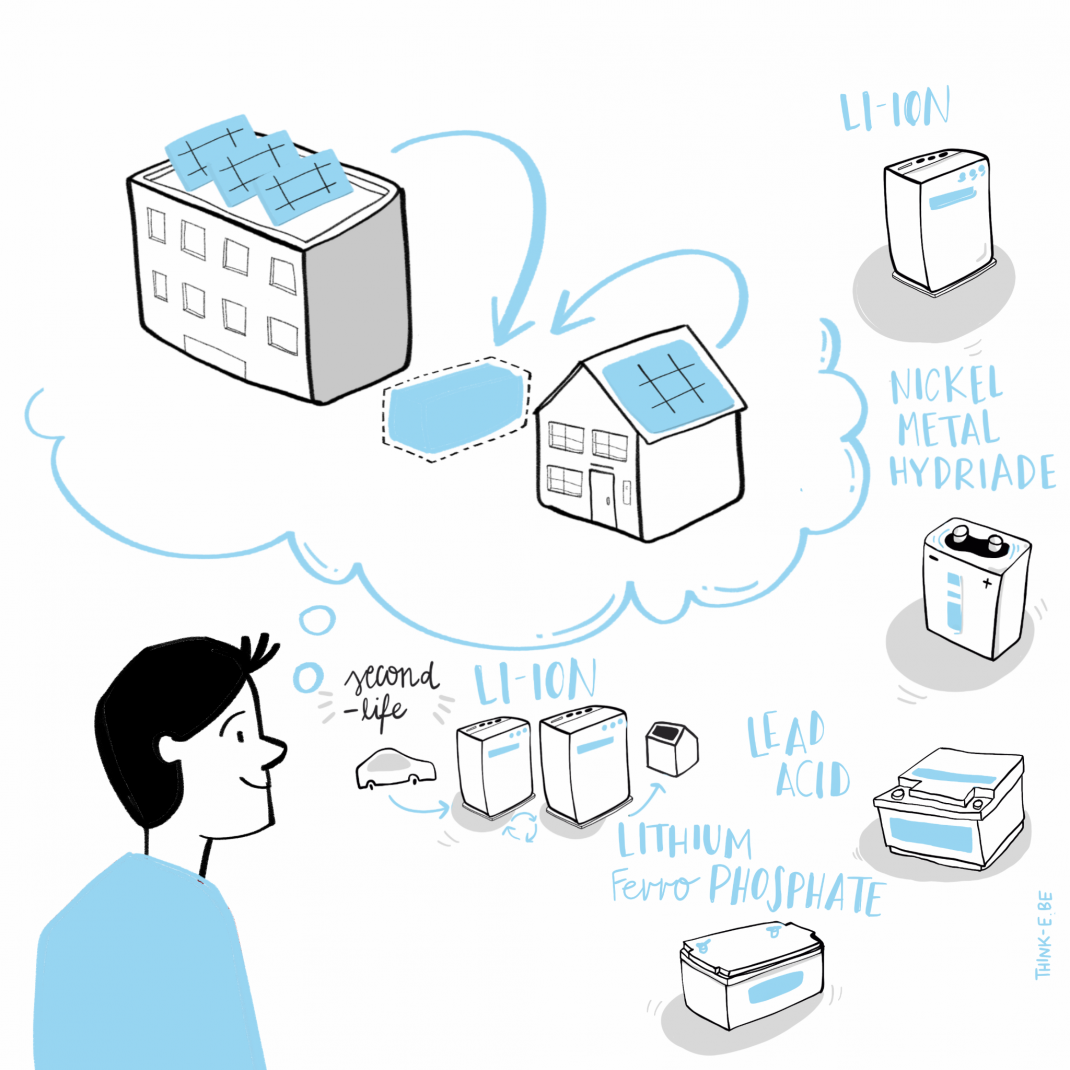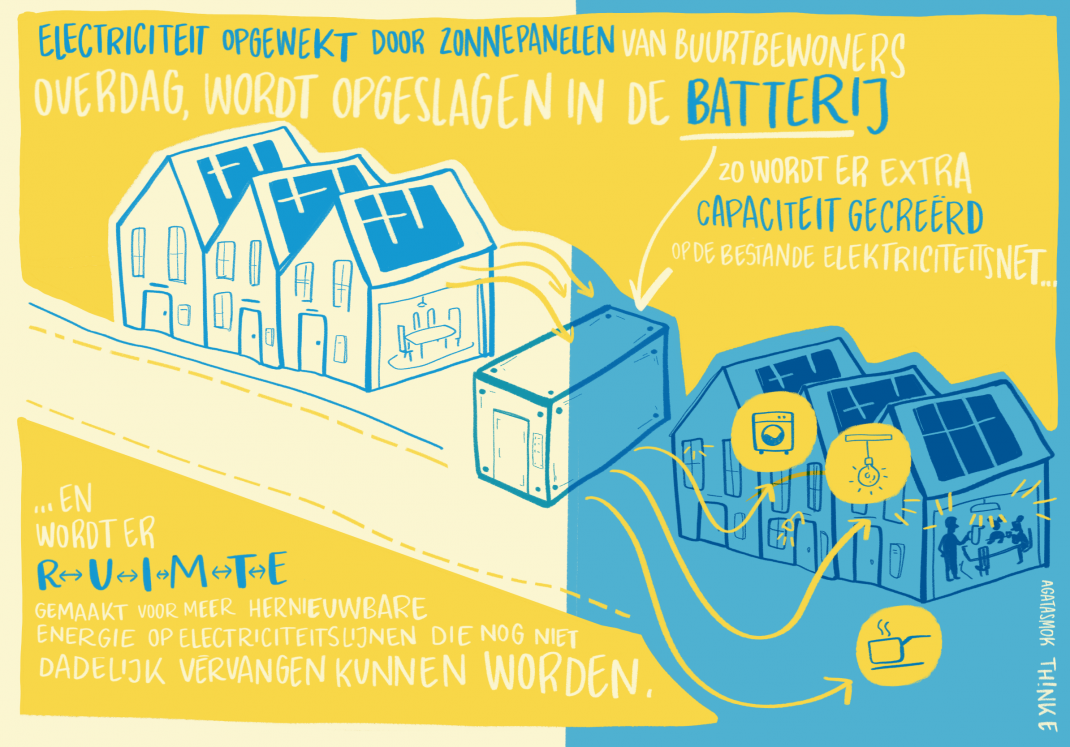Blogpost
What makes an optimal building/home battery energy storage system?

Is there a battery type or size that is the best for home/building installations? Are different battery systems comparable when it comes to safety and ease-of-installation? How do all of these factors affect (or not) home/building insurance?
The energy system needs to become more transparent, sustainable and decentralized. In such systems, houses and buildings are active participants, not just consumers.
Flemish houses and buildings have various electrical systems to satisfy energy needs. From direct electrical heating, over heat pumps to hybrid PV systems. In addition, more and more buildings have electric vehicles and charging infrastructure. Battery energy storage systems (BESS) are seen as a way to ensure quality and security-of-supply, as well as flexibility and peak shaving for end consumers and electricity networks. However, with different battery systems available on the market, it is not trivial for house or building owners to decide which type of battery system to use from the technical, economic and safety perspectives. Additionally, the business case of real battery systems might be less positive due to losses, suboptimal charging and discharging, inaccurate estimation of the state of charge and other reasons.
To help answer some of these questions, in 2019-2020 Th!nk E gathered Flemish partners (Volta, Vinçotte, Adinex, Imtech, Febelauto and AG Insurance) in a demonstration project called BORGT. The project focused on comparing different types and sizes of BESS in terms of the ease of installation, the fire risk and safety, the certification procedure and the applicable home insurance.
Battery type and size
In the course of the BORGT project, the following battery types were included: Lead acid; Lithium Ferro Phosphate (LFP); Li-ion; 2nd life Li-ion and Nickel metal hydride (NiMH).
Each of the battery types, except for NiMH, has been used in BESS installation of different sizes in Flanders. The analysed BESS sizes go from small household system (<10 kWh), over medium size (50 kWh) to neighbourhood size BESS (90 kWh) (read about the Neighbourhood-size battery here).
Demonstration sites
Two demonstrations of BESS in buildings have been implemented by Th!nk E and Imtech at the Living lab and by Febelauto at the Watt4ever facility.
The first demonstration project originally aimed to install and operate a BYD LFP 50 kWh battery at the Th!nk E Living lab. The battery was composed of five 10 kWh stacks of each time four 2.5 kWh battery cells. The purchase and installation of the BESS helped us identify all the hurdles of the process: long delivery time and lack of adequate documentation and support from the battery supplier, lack of compatibility between the battery management system and inverters, installation issues caused by the communication lag between the battery modules themselves and between battery units and inverters. Although this battery technology is safe and has good technical properties, for instance a very low self-discharge, high expected number of cycles and a high efficiency, the coupling of different units was clearly not a priority of the manufacturer when designing the system. Communication interruptions between the units, manual interventions needed in case of fire, and random activation of batches with a risk for peaks, are just some of the identified safety concerns when coupling multiple modules. The set-up was consequently replaced by lead acid technology. Due to the absence of a battery management layer, the communication is less complicated. Implications of this technology are the need for improved ventilation, and a lower efficiency.
The second demonstration represents a 8 kWh Li-ion NMC second-life battery, which was successfully installed at the new production facility of the Febelauto affiliated company, Watt4ever. Prior to installation, the BESS was demonstrated at the Autoshow in Brussels to a wider audience.
Installation, certification and fire safety
Different battery types face different fire risks and have different requirements for safety measures, which were tested during this project. Such safety measures, along with the BESS size, will affect the installation and certification procedure. With joint efforts Volta and Imtech worked on guidelines for best practices for installation of BESS in Flemish homes. Vinçotte proposed guidelines for improvements in the certification of home BESS. In addition, Adinex NV tested the fire safety of LFP and second life Li-ion (NMC) battery types used in the demonstration projects. The results have been presented in a webinar on 30th of October 2020. Highlights included the videos of two battery types being subject to external heat sources confirming the need for clear guidelines, also for firefighters.
Home battery business case
Within the project, Th!nk E analysed the business case for home BESS and compared it with the neighbourhood battery. Even with incentives for the purchase of home BESS, without the possibility to provide flexibility services to the DSO, the only benefits of owning a home BESS system currently are increased self-consumption of own PV produced electricity and reduction of peak consumption, which will be interesting once the capacity tariff is in place. While self-consumption and peak shaving could lead to savings, the inefficiency of the battery and the impact of suboptimal charging and discharging will negatively impact the business case. As experienced in BORGT and seen in many other projects that were followed as part of BORGT, including an Australian lab testing commercially available Li-Ion batteries, there are still many technical hick-ups, even with well-known brands. Some of the issues take months to be resolved or even require a full replacement of the battery pack.
In order to overcome at least part of the challenge, i.e. ensure a correct installation, GEP, VOLTA and Th!nk E were awarded the contract for the training of installers.
With knowledge and experience on the application of different battery energy storage systems, we are inviting you to contact us to collaborate through research, innovation and application partnerships that can help make battery systems common building and energy community elements.
Moreover if you are a building owner or an energy community who is considering installing BESS, contact us to see how our consulting team can help.
 Bat2Portal
Bat2Portal
Contact us! Mail to info@think-e.be

